Gilding picture frames dates back hundreds of years. The processes have changed very little over the years and at Gesso & Bole Picture Framing, we still use some of these traditional techniques to achieve unique finishes on our frames that are handmade in Ottawa.
There are two main types of gilding used in picture framing, water gilding and mordant (oil) gilding.
Although the two processes have some similarities, the method in which the leaf is applied to frames differs. In this post I will be talking about mordant or oil gilding and running through some of the basic methods to oil gild a picture frame.
When using gold or metal leaf in water or oil gilding, surface preparation is everything. The standard thickness of gold leaf is about 0.1 micrometer, about 1000 times thinner than a regular sheet of printer paper. Metal leaf is about twice at thick as pure gold but that is still only about 3 millionth of an inch. The thinness of the material means that any imperfections in the surface below will be seen in the leaf when it is applied to the surface of the frame. It is therefore extremely important to prepare an absolutely smooth surface for gilding onto. Here is a step by step process of a frame that we recently oil gilded using aluminium leaf.
The way in which we achieve this is by using a substance called gesso. Gesso is a traditional material made using rabbit skin glue, chalk and water and it is also where half of our name comes from! (The other half is another is a clay used in water gilding). It has been around for hundreds of years with little change in the recipe.
To make gesso, granular rabbit skin glue is first mixed with water and left to soak for several hours until the water has been absorbed.
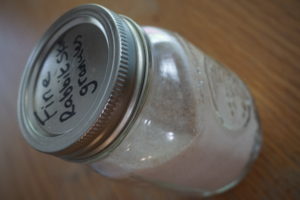
The rabbit skin glue and water mix, known as size, is then melted using a double boiler method until it becomes a liquid. It is important to not let this mixture get too hot as the proteins that make the glue effective will break down above around 40 degrees celsius.
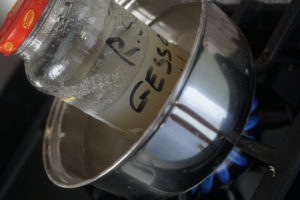
After the size has melted, whiting must be added to make the gesso. Whiting is also know as calcium carbonate, basically just chalk.
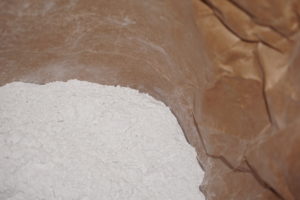
The whiting must be added slowly and carefully to avoid introducing air into the mixture as this will cause small air bubbles and imperfections in the surface of the gesso when it has dried on the frame. Whiting should be added into the gesso until it has the consistency of heavy cream. It is then ready to be painted onto the surface of the picture frame.
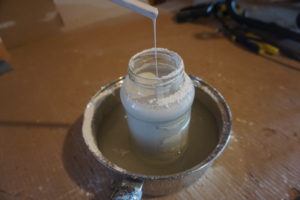
Around 10 layers of gesso should be applied to the surface of the frame, each layer of gesso being allowed to dry in between applications. This process can take several days depending on the drying time of the gesso. The gesso must then be sanded completely flat, removing any imperfections that could be seen through the metal leaf until it has a porcelain-like finish.
Gilding size is then applied to the gesso to create a tacky surface for the metal leaf to adhere to. There a many different types of gilding size to choose from, both oil based and water based sizes are available each with certain benefits and drawbacks. The size is then left to become tacky, this time depends on the type of size that is used but can vary from about 15 minutes with water based size, to around 3-12 hours with oil based sizes.
The metal leaf is then carefully applied to the surface.
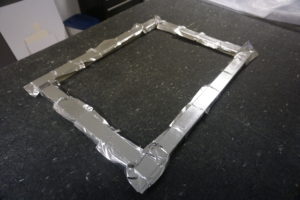
Once the gold leaf is applied to the surface of the frame, it should be pressed down with a dry brush and the excess leaf removed.
The metal can then be toned, rubbed through to reveal the colour underneath, finished with a clear coat or left as it is. Unfortunately, the main draw back of oil gilding over water gilding is that the metal leaf cannot be burnished and must be left matte.
We decided to give this frame a slightly distressed rubbed through finish to show some of the colour underneath. We painted the outside and inside surfaces of the frame matte black and finished it with a clear coat of polyurethane.
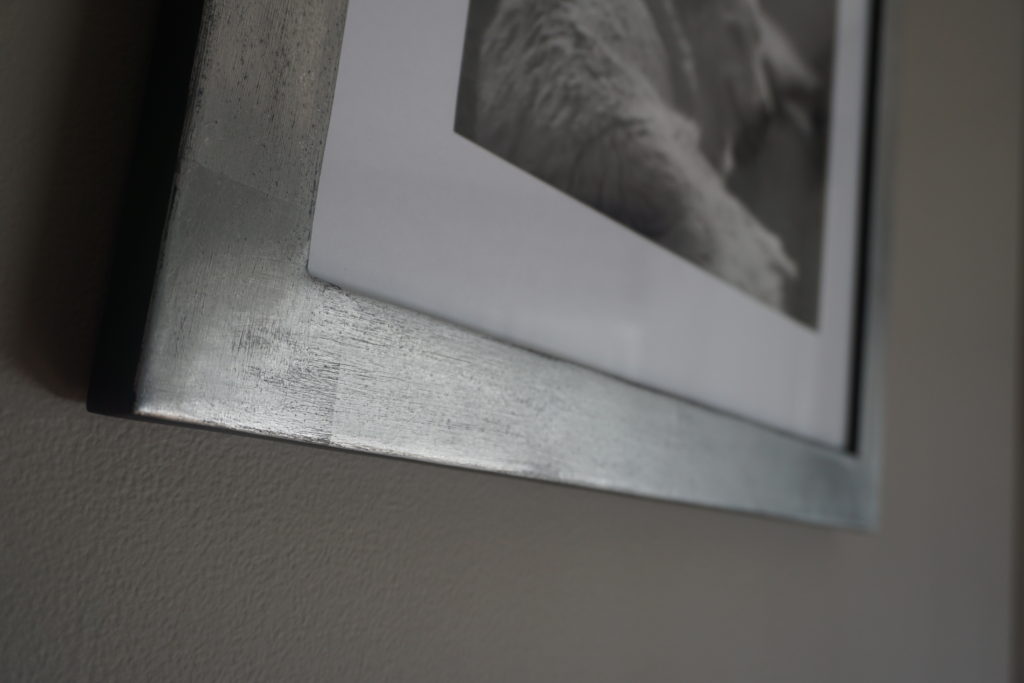
This method can be used to create all sorts of interesting and beautiful finishes, so why not give it a try yourself!
If you have any questions about oil gilding or would like any tips, don’t hesitate to contact us!
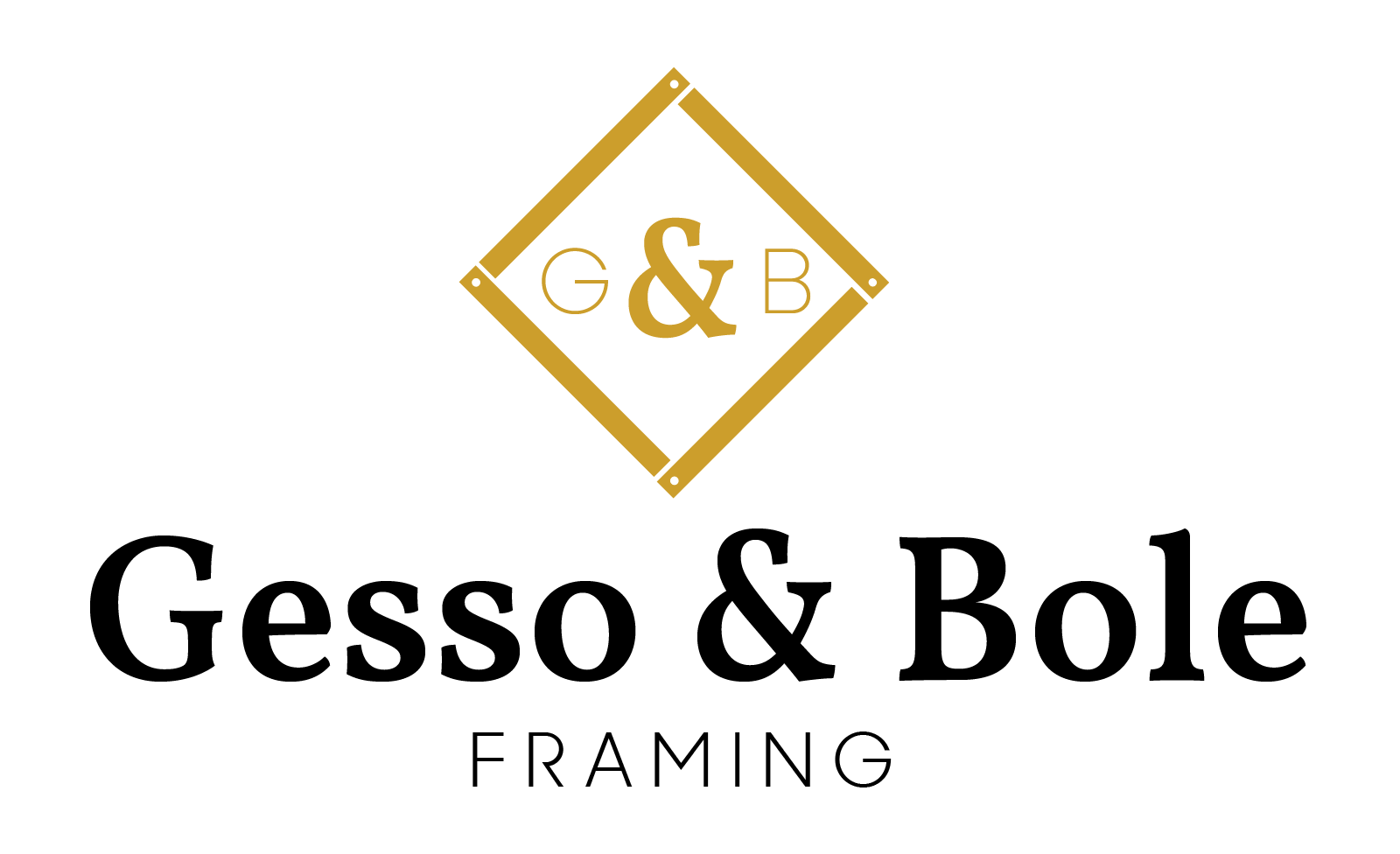
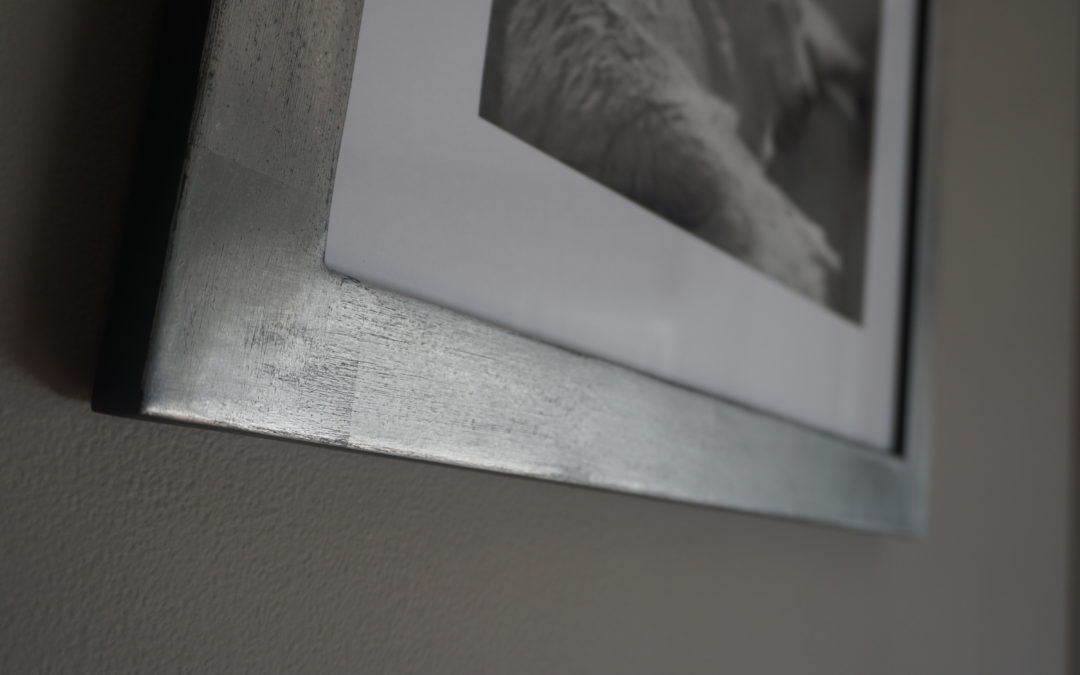
Recent Comments